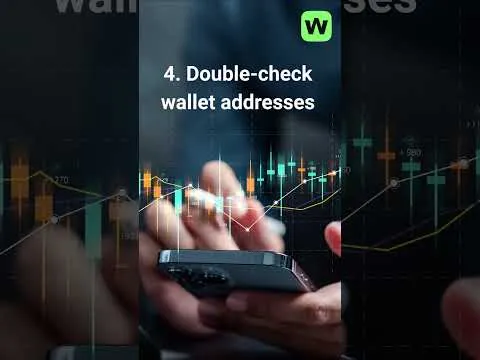Your First Step to Crypto Freedom: Setting Up Your Secure Wallet
Ready to dive into crypto but want to keep your digital money safe? Great choice! One of the first and most important steps is setting up your own secure "non-custodial" wallet. Think of it like having your own personal vault for your crypto, where only you hold the key. Custodial wallets, often found on exchanges, are like banks holding your money – convenient, but you don't have ultimate control. With a non-custodial wallet, you truly own your crypto.
Here’s how to set one up, step-by-step:
Step 1: Choose Your Wallet Type
For beginners, a software wallet (like a mobile app or browser extension) is usually the easiest place to start. They're user-friendly and convenient for managing your crypto on the go or from your computer. Hardware wallets (physical devices) offer top-tier security but can wait until you have more assets to protect.
Step 2: Pick and Download a Reputable Wallet
Do a little research to find a well-known and trusted non-custodial software wallet. Make sure you download it only from the official website or your phone's official app store to avoid scams. Popular options exist, so look for one with good reviews and strong security features.
Step 3: Create Your New Wallet
Open the app and follow the prompts to create a new wallet. This process is usually quick and straightforward. Unlike exchange accounts (custodial wallets), you often don't need to provide personal information like your email address.
Step 4: THE MOST IMPORTANT STEP – Secure Your Seed Phrase!
During setup, the wallet will show you a unique "seed phrase" (also called a recovery phrase) – typically 12 or 24 random words in a specific order.
- What it is: This phrase is the master key to ALL your crypto in this wallet. Anyone who has it can access your funds. It's also the only way to recover your wallet if you lose your phone or computer.
- How to secure it:
- Write it down: Use pen and paper. Write the words clearly, in the correct order, and number them.
- Store it OFFLINE: Keep this paper somewhere extremely safe and secret – think a home safe, a safety deposit box, or another secure location only you know. Consider making a second paper copy stored in a different secure location.
- NEVER: Store it digitally (no photos, emails, cloud storage, password managers) or share it with anyone. Seriously, anyone asking for it is likely a scammer. Losing this phrase means losing your crypto forever if your device fails.
Step 5: Set a Strong Password/PIN (If Applicable)
Most software wallets also require a password or PIN to open the app on your device. Make this strong and unique, but remember – this password only protects the app on that specific device. The seed phrase is the ultimate backup and key.
Step 6: Understand Your Addresses
Your wallet will generate public addresses. These are like your crypto bank account numbers – you share them to receive crypto. They are safe to share. Your private keys (which the seed phrase represents) are what you use to send crypto, and these must always be kept secret.
Step 7: Start Small
Before moving large amounts, consider sending a very small amount of crypto to your new wallet address from an exchange or another source to get comfortable with the process.
You've done it! You now have a secure wallet where you control the keys. This is a huge step towards safely navigating the crypto world.
Want more easy-to-follow crypto guides? Follow me for tips on staying safe and exploring opportunities!
